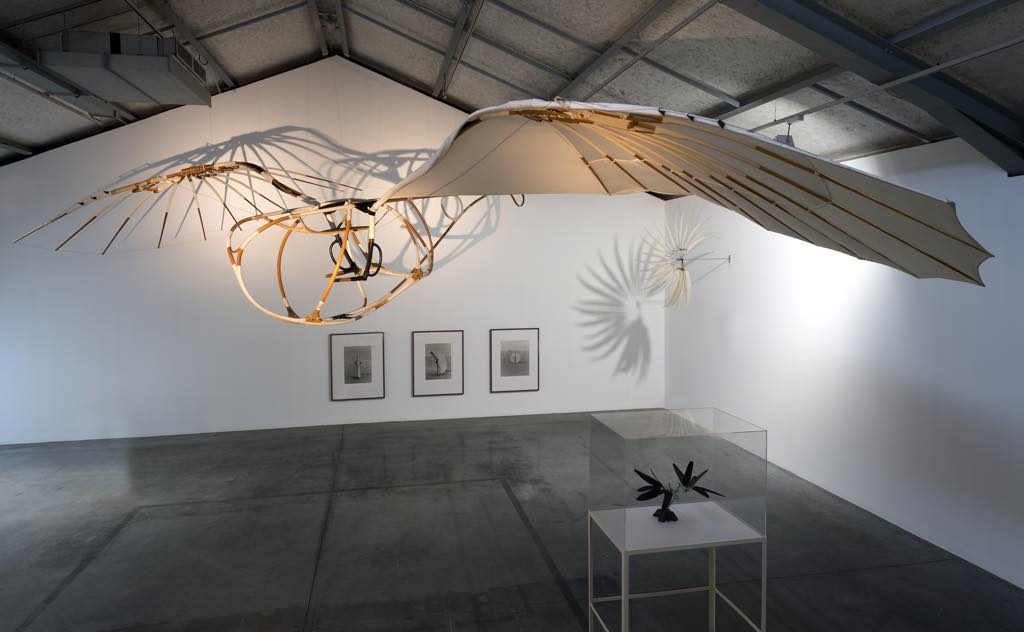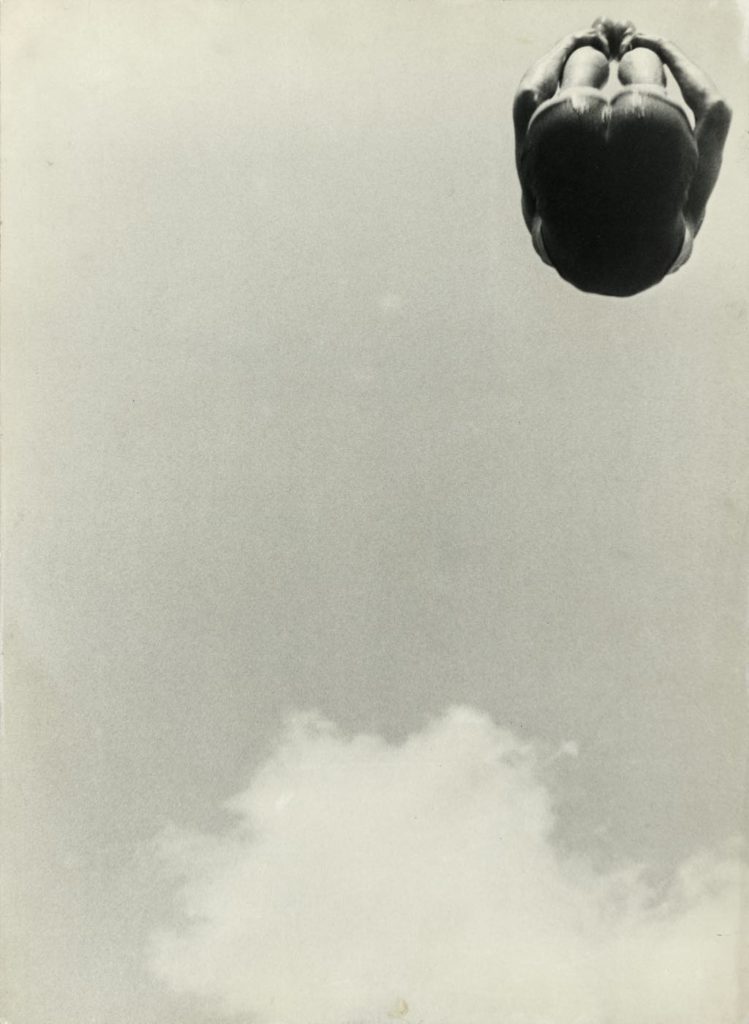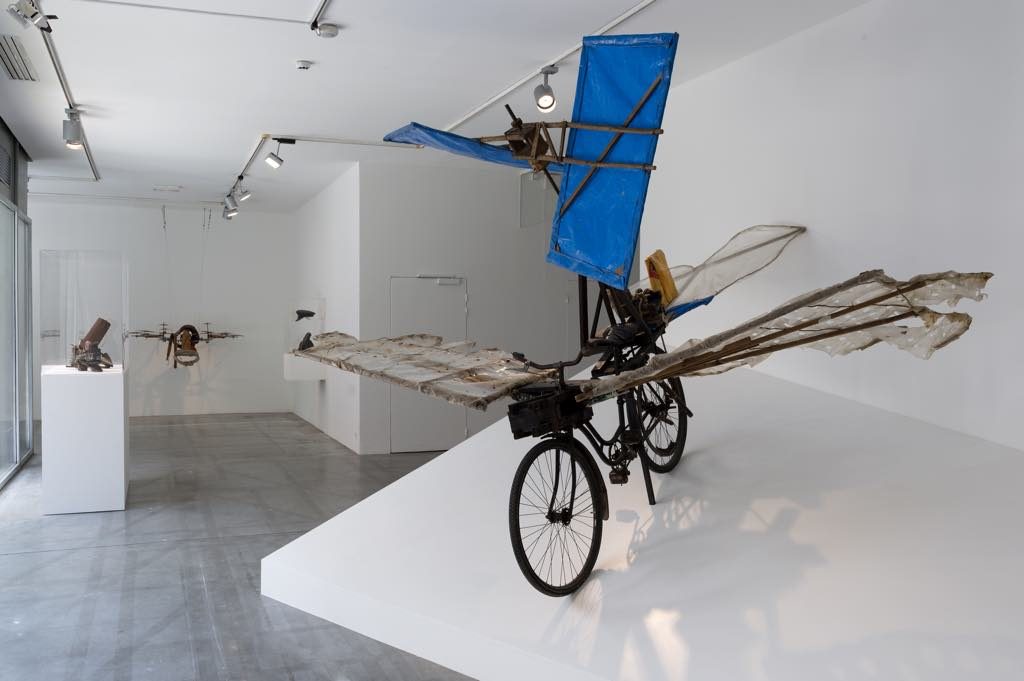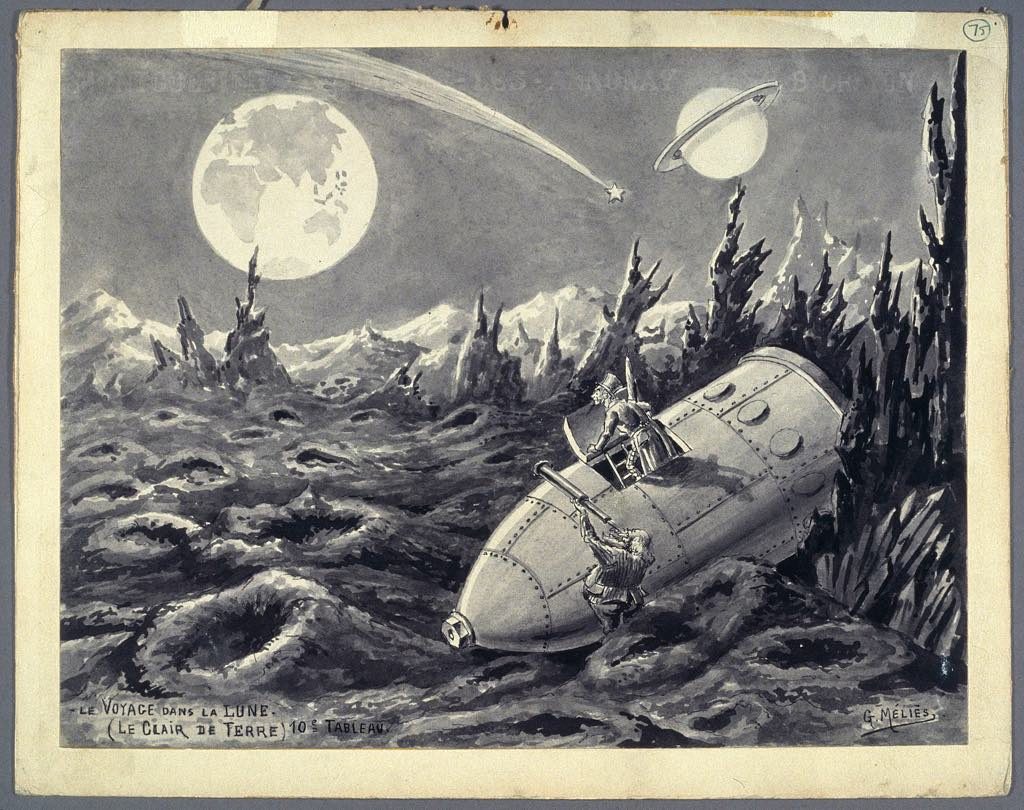
Thematic exhibitions don’t teach visitors much about an artist or an art movement, but they are often amusing and/or thought-provoking. “L’Envol” (“Flight”) is both as it explores humankind’s eternal dream of flight. This is the last exhibition to be held at the Maison Rouge-Fondation Antoine de Galbert, after which it will close its doors for good.
The show’s four curators have tackled the theme from every imaginable angle with some 200 works. It starts with the famous scene from Fellini’s La Dolce Vita (1960) in which a statue of Jesus is seen flying over Rome dangling from a helicopter on its way to the Vatican. The men in the helicopter amusingly bring this heavenly sight down to earth by hovering over a rooftop and flirting with four girls in bikinis sunbathing on it.

The religious theme returns later in the show, which next presents a number of photos of people moving through the air in one way or another, whether with homemade wings or by jumping, tightrope walking, skydiving or diving into water, as in two handsome black-and-white photos by Aleksander Mikhailovich Rodchenko of divers caught in midair.
Videos play a large role in the exhibition. One of my favorites was Shimabuku’s “Flying Me” (2006), which shows the artist flying a kite that is a life-sized replica of himself standing in a rigid position. At first glance, it looks like a real person standing stiffly as he flies through the air, so it comes as a shock when he crashes headfirst to the ground.
Another amusing video is Otto Piene’s “Sky Kiss – Linz, with Charlotte Moorman” (1982), in which performance artist Moorman plays her cello while suspended in the air from helium-filled balloons.
Less literal interpretations of flying depict the “high-as-a-kite” feeling induced by drugs or religious ecstasy, as in the photo “Ecstasy: Portrait of Marcelle Chantal” (1927) by another Russian artist, Albert Rudomine, a close-up lit so such a way that it does indeed make the subject look as if she is on a higher plane. A nice counterpart to it is Jean-Philippe Charbonnier’s grainy 1966 photo of a woman flying high on LSD.

There are also many contraptions made by people who acted on their desire to fly. The best is the “Bicycle-Helicopter” (1978) made by a German man, Gustav Mesmer, who spent most of his life in psychiatric wards. It is accompanied by a video of this heartbreakingly sweet man, a sort of German Jacques Tati, explaining how he made it and testing it out in the countryside. Some of the shoes to which he attached springs to propel him into the air are also on display.

Space travel has not been neglected, and visitors can take a trip to the moon simply by taking off their shoes and entering Fabio Mauri’s installation “Luna” to experience what it feels like to walk on the moon (rather nice). A clip from Georges Méliès’s wonderful 1902 film A Trip to the Moon is pure delight, as a group of top-hatted old men carrying umbrellas are blasted to the moon in a rocket that puts out the eye of the Man in the Moon.
Antoine de Galbert, the private collector who founded the Maison Rouge in 2004 and has now decided to close it, has a distinct preference for Art Brut, which is evident in many of the exhibits, in a kind of hymn to all those “crazy” people like Gustav Mesmer who not only dream of flying but also try to do it. As de Galbert puts it, “Of course we will never be able to fly, but we must never stop nurturing the dream if we are to survive.”
Favorite
I am so sorry to hear that Maison Rouge is closing.
I thought I saw the ‘final exhibition’ last November.
I regularly saw whatever was on when in Paris–usually April and November. Everything they showed was interesting and informative. Thanks for those!
Great site! Have a nice vacation.
Thanks!